We all have a stash of things that we aren’t using any longer but still keep around. This could be because they still have too much value to just give them out or throw them away. Selling your unwanted stuff online may just be the only viable choice.

By not hoarding them, you can declutter and earn extra money from home. But garage sales can be a lot of work, and physical stores only want to pay pennies on the dollar. So, how can you pull this off and having no regrets from the get-go?
Using resale platforms online is the answer! It has never been this easy to sell stuff online. There are tons of marketplaces on the internet looking to attract buyers and sellers by making the process straightforward.
So, if you have a box, closet, or basement full of old or extra stuff, it might be time to dust it off and sell it online. This article will help show you how!
Best Places To Sell Unwanted Items
How to Sell Stuff Online and Make Money
There are so many options available to us to sell our unwanted items and make some extra money.
There is absolutely no point having unwanted items sitting around collecting dust at home, so why not start making some cash back on it instead? Below are some actionable steps to follow to sell your unwanted items with no hitch:
Step 1: Take High-Quality Pictures
Anyone in ecommerce can tell you how important pictures are to make a quick buck. The same goes for you!
Especially for pre-owned products, buyers want to see exactly what they’re getting before sending you their money. Condition is important, as is proof that you actually have what you claim and aren’t another scammer. High-quality photos can even earn higher prices!
Step 2: Write a Captivating and Informative Product Description
A helpful product description can help you land a sale and might even help shoppers find you when typing in search terms. Be sure to include relevant information like brand, year, and other descriptors they might search for.
You should also describe the item, add keywords, and any disclaimers or selling points about quality, condition, age, and functionality. To achieve successful results, be honest and thorough.
Step 3: Set a Market-Friendly Price
How much do you want for your stuff? It’s easy to undersell or overvalue your stuff if you don’t know what’s available elsewhere. Surveying the marketplace will help you determine a fair asking price.
Try to find a similar secondhand item in relatively the same condition. If you’re trying to sell a used surfboard with pressure dents and dings at the same price as others are selling theirs in good condition, it will take forever to sell.
This prevents you from losing money or making no sales. You can go further and adjust your pricing and relist it as needed.
Step 4: Research Other Successful Listings
If you’re wondering why other merchants are selling more than you on these platforms, go check them out! Try to identify what they do better than you, like having better product photos, more competitive prices, or maybe they’re just more established.
Chances are you’ll have competition selling the same or similar products, so you need to stand out and encourage visitors to shop from your store. One way to achieve this is through effective promotion. Research the competition, uncover market opportunities, and do better!
Step 5: List Your Unwanted Stuff
So you’ve done the decluttering and picked out the items you want to sell. That’s great. Now, it’s time to actually put them out there. Listing your things online might sound daunting, but it’s actually a practical, straightforward process.
It really is best to gather your photos and product description ahead of time. That way, you can copy and paste your listing information across a few sites. Let’s get into some of the places you should consider listing your stuff.
Best Places To Sell Used Stuff Online
Using the right website to sell items online can mean the difference between earning a good profit or making a sale at all. Using category-specific marketplaces can make things easier if you want to focus on one type of item, but it’s not always possible.
Also, some product categories don’t have dedicated marketplaces. Even then, you can move them to popular platforms where people will buy practically anything. Below is a list of the best websites for turning your old stuff into cash and getting top dollar, along with important things to note about each of them for the best deals.
1. bonanza
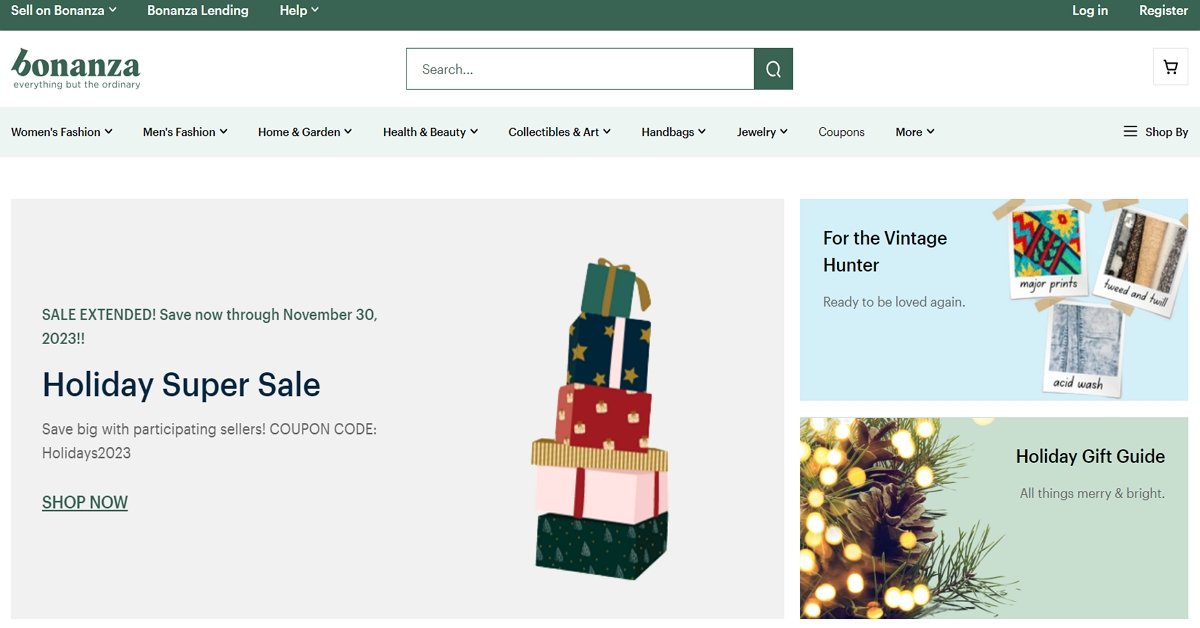
Bonanza may be a newcomer in the online trading space, but its services are like a veteran’s. Bonanza has set the ground rolling immediately and already has a large community of buyers and sellers. You can sell virtually all kinds of stuff on this platform.
However, what makes them really special is that you won’t pay any money for listing your product. It charges fees like 25 cents as a transaction fee and 3.5% of your item’s Final Offer Value. Final Offer Value refers to the total of the item’s price and the portion of the shipping fee above $10. So, assuming your stuff goes for $30 and accrues a shipping fee of $15, the Final Offer Value will be $35.
2. ebay

This is one of the oldest platforms for selling items, as it has existed since 1995. Therefore, this platform is well-known and attracts a lot of traffic for both buying and selling.
eBay has changed from its early days as an online auction platform, and that’s still very much an option. However, many sellers use the site for traditional sales, including full-fledged online businesses. There are over a billion products listed on eBay, selling just about anything you can think of.
Unlike Bonanza, eBay fee structure is more pronounced. You must pay for listing products, choosing multiple categories, and making transactions, as well as between 10 and 13% on the total purchase fee.
3. Etsy
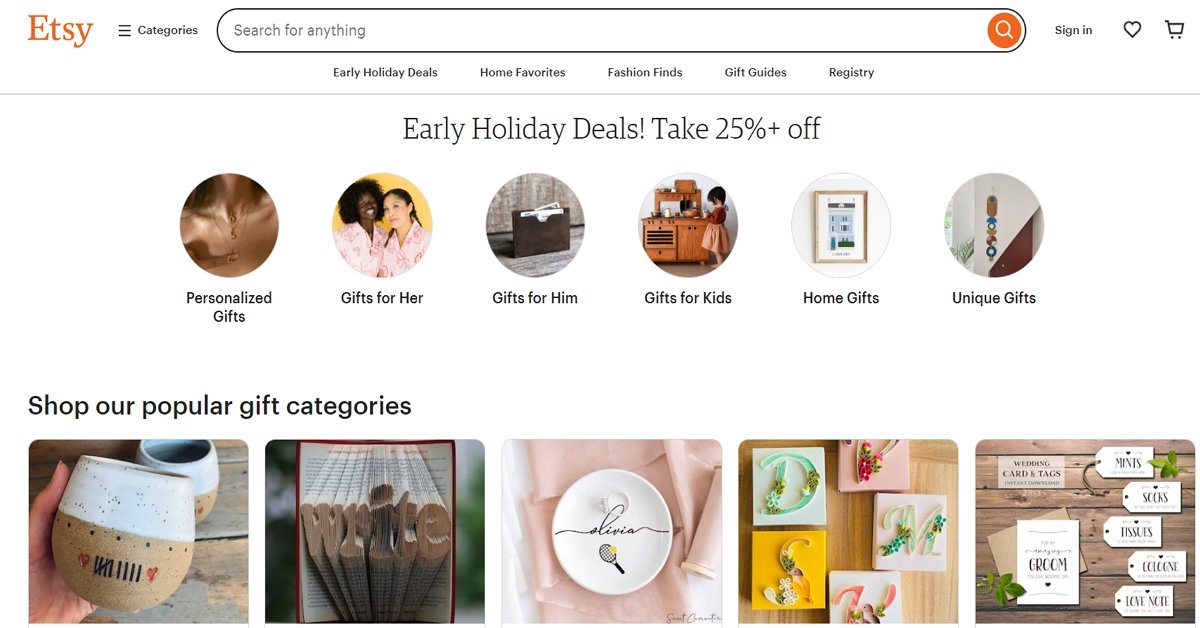
Though Etsy has guidelines for what you can sell in its marketplace, it is a great option for unique, handmade goods. Whether you’re an artist, into craft supplies, or just looking to sell a vintage treasure, this resale platform is for the more eclectic audiences.
The price for listing your stuff here is 20 cents, which is eligible for 4 months only. So, you must pay another 20 cents if you’re unable to make a sale within that period.
There is also a 6.5% transaction fee and an additional 3% on the total purchase plus 25 cents.
4. Ruby Lane
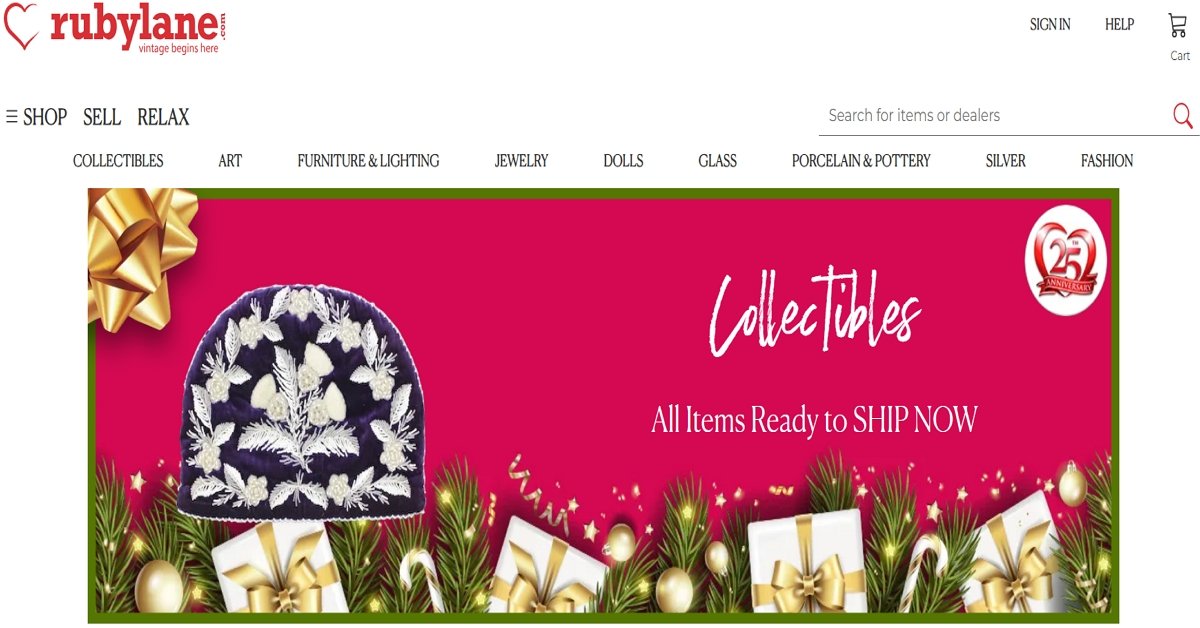
Selling products on your own website gives you the most control over your brand, customer experience and profit margins. You can pretty much sell anything on your Shopify Site. You can connect your ecommerce platform to any major sales channel to increase sales.
5. Craigslist
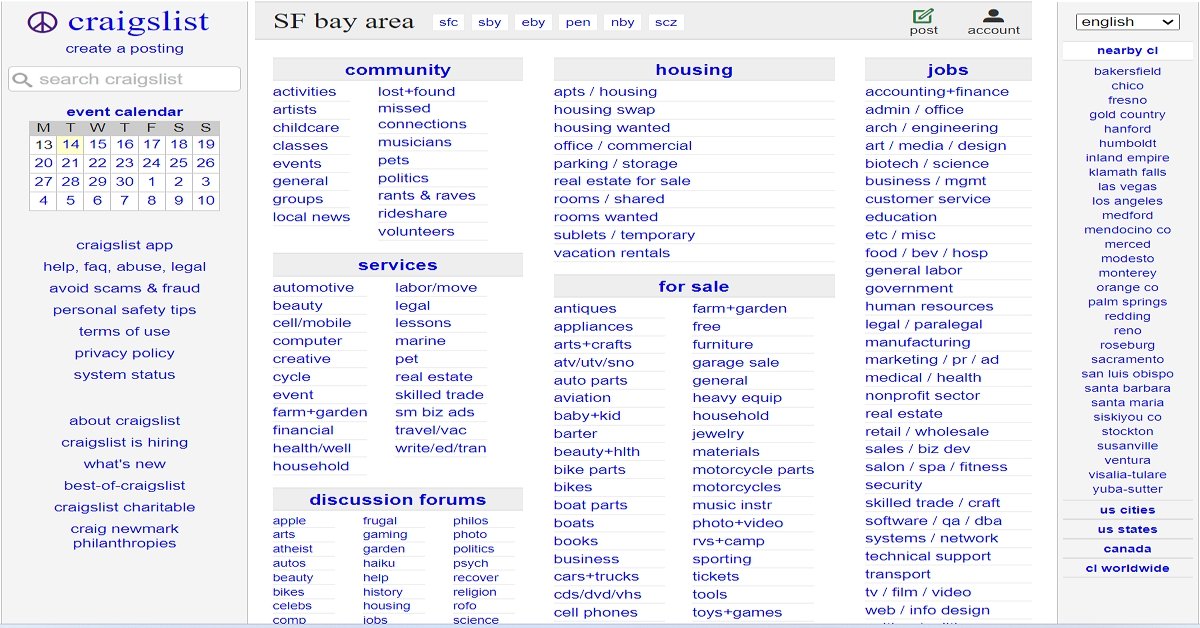
Craigslist is an old platform that started as just a forum to sensitize people to local events in San Francisco. Since its inception, the company has grown into a bustling online selling site. Though Craigslist started charging a product listing fee for different post types, it is still a popular option for local classifieds. You can sell just about anything on this local selling website, and there are even categories for posting about job openings and community events.
It is completely free to use, set up, list products, and make sales. However, the platform’s interface and experience are pretty basic; you must do most of the heavy lifting to make sales, and there aren’t many measures on the ground to guard against scammers.
6. Facebook Marketplace
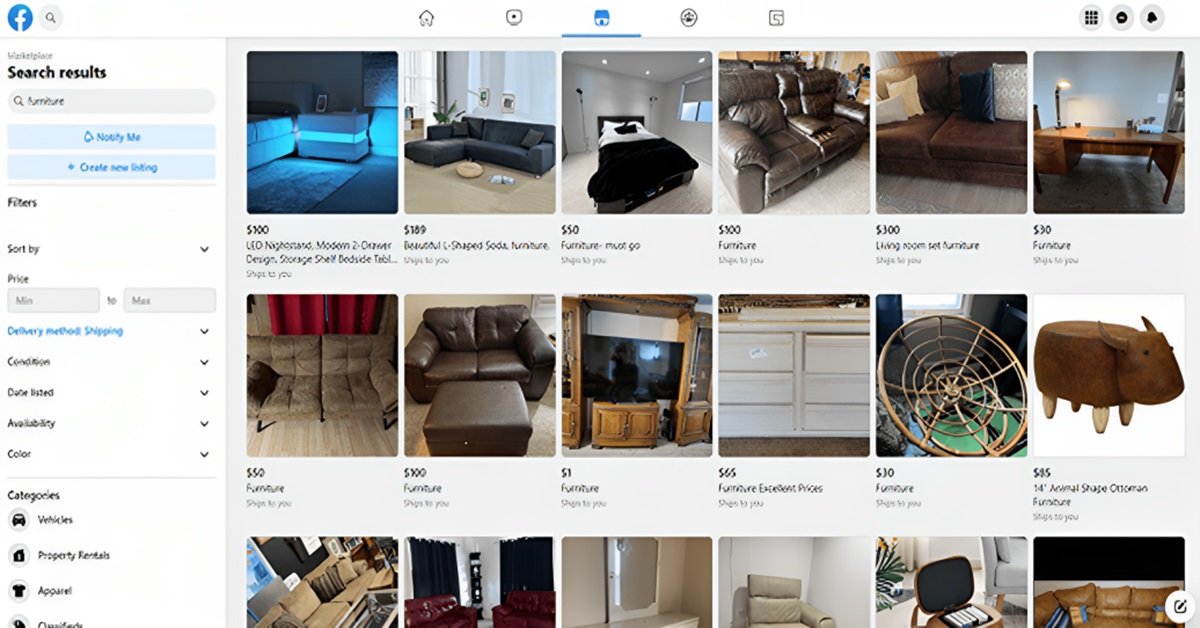
Facebook Marketplace is another new kid on the block, as it was unveiled as recently as 2016. By leveraging the popularity of the Facebook app, it is quickly becoming a popular choice for many. Upload a picture, item description, and general location for a product to make a deal with interested buyers in your area. You can also arrange for shipping items. They easily coordinated everything via Facebook Messenger and local Facebook groups.
It’s easy to use this platform, and it’s also relatively cheap since you won’t be paying to list your stuff. They will only charge you 5% for every shipment or $0.40 for shipments under $8.00. But be sure to read through and digest the requirements and guidelines for using this platform before you get started.
7. Nextdoor

Just like Craigslist, Nextdoor started as a place for people to share news and information with their local community. It wasn’t long before people started using it to advertise garage sales and post things for sale. This is an excellent option for meeting local buyers and is a safer community than some of the broader options.
It’s also completely free to use. However, unlike Craigslist, it appears to be much safer, and the platform can also help you advertise your stuff (which attracts a little fee, though). You must also deliver the item to the buyer in person.
8. OfferUp

OfferUp is a more modern Craigslist, facilitating local sales with the help of a mobile app and user ratings. The items put up for sale here are usually clothing, electronics, and automobiles.
Consider using this eCommerce platform to sell your stuff instead of some other local selling sites, which have had some safety issues because of some individuals abusing them. The platform is free, convenient to use, and safer than some other options. Also, you can deliver in person or via shipping.
9. Decluttr

Decluttr sets itself apart with its easy-to-use app and simple process. For items with barcodes, like video games and DVD cases, you can simply scan the barcode for an immediate valuation. To sell electronics like Android smartphones and video game consoles, Decluttr is the way to go. Just search the brand and product number, choose the item’s condition, and receive an offer.
This platform is unique because it buys from you directly. Decluttr will send you a prepaid shipping label; just put the items you are selling in a box, print them out, and take them to a UPS drop-off. Simple!
10. Swappa
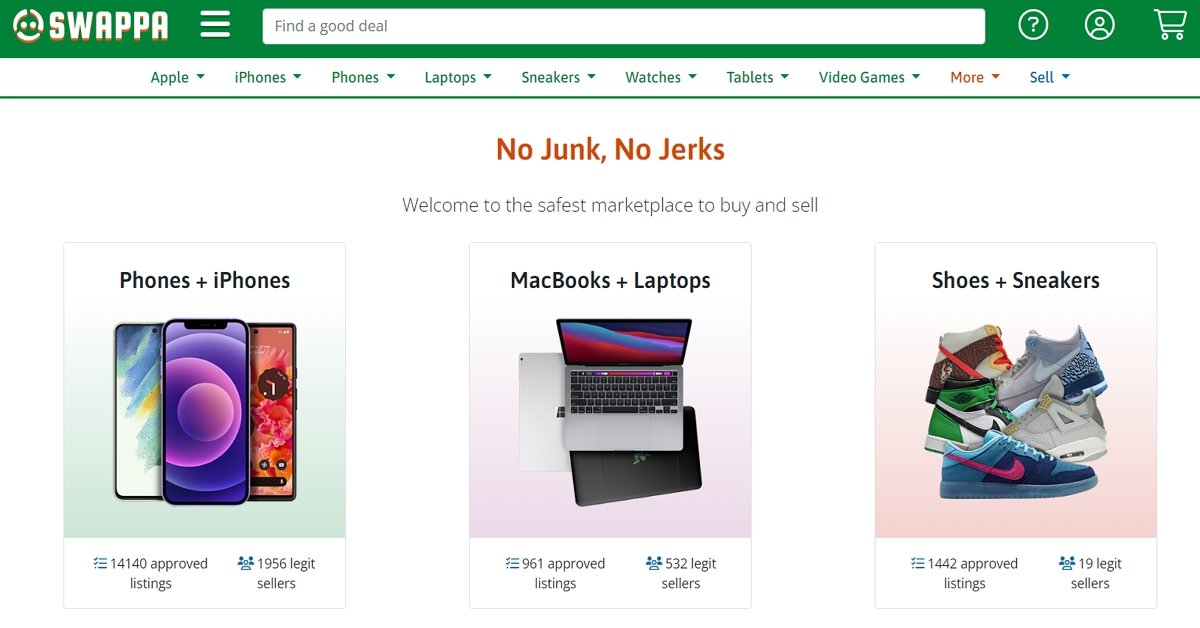
This popular selling site is a brilliant choice to sell your abandoned smartphones, cameras, or other gadgets. The platform ensures your safety by taking fraudsters away seriously. It thoroughly vets anyone who wants to transact on the platform, buyers and sellers alike.
The same level of scrutiny applies to your unwanted items to ensure they’re in good working condition. So, it’s not surprising that people regard Swappa as a trustworthy platform.
The platform doesn’t charge any fees for listing your stuff, either. However, if you want to promote your stuff, you must pay $5. Swappa will charge you and the buyer 3% of the final sale price. Payment methods include PayPal.
11. Gazelle
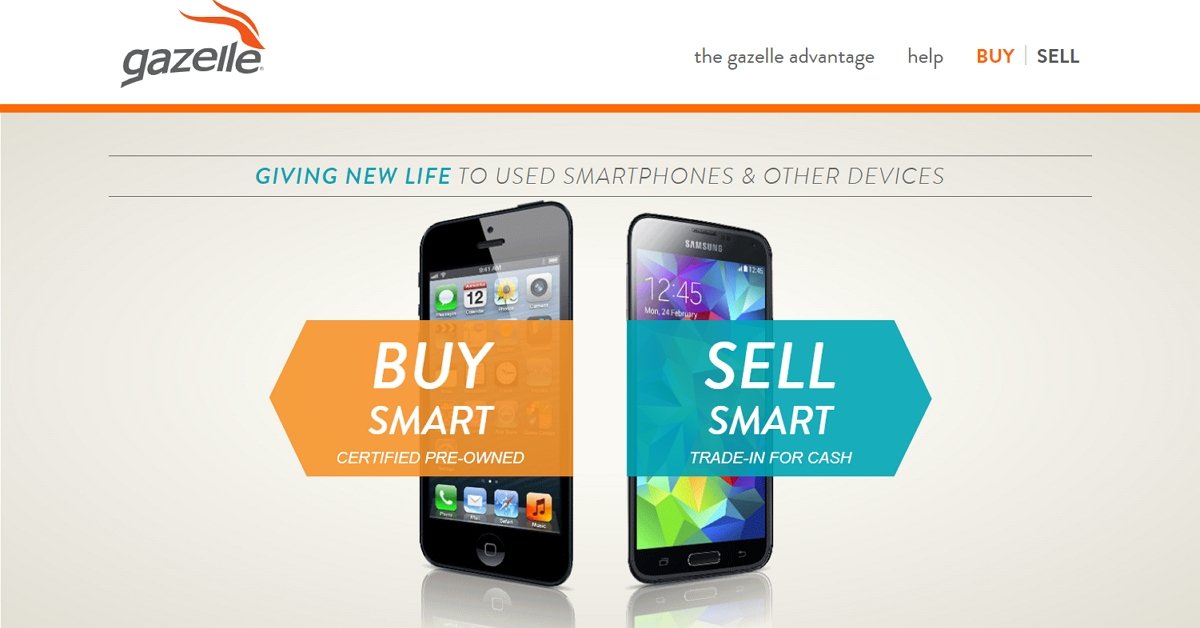
Gazelle is like Decluttr, though they focus more on gadgets like cell phones, laptops, tablets, and other Apple devices. Tell them what you have and its condition, and they’ll make you an offer. Send the item in for inspection, and you will receive your payment.
They will also clear your personal data off the devices you send, so you don’t have to worry about whoever purchases your pre-owned cell phone.
12. Poshmark

Poshmark aims to be a social platform for clothing sales. Sellers have a wardrobe that app users can follow, and shoppers can comment and ask questions about stuffs for sale to receive feedback. Shipping your stuff is easy. The buyers pay a $2.95 fee for a total purchase that does not exceed $15 and 20% if above $15. Sellers then get an automatic shipping label printed out and sent to their email addresses.
Poshmark hosts four themed shopping parties per day where sellers share relevant merchandise with their fans. You can also negotiate deals on listed items, which the sellers can accept or reject. Sellers can also give discounts or lower shipping costs to shoppers who have liked their items in the past.
13. Chairish
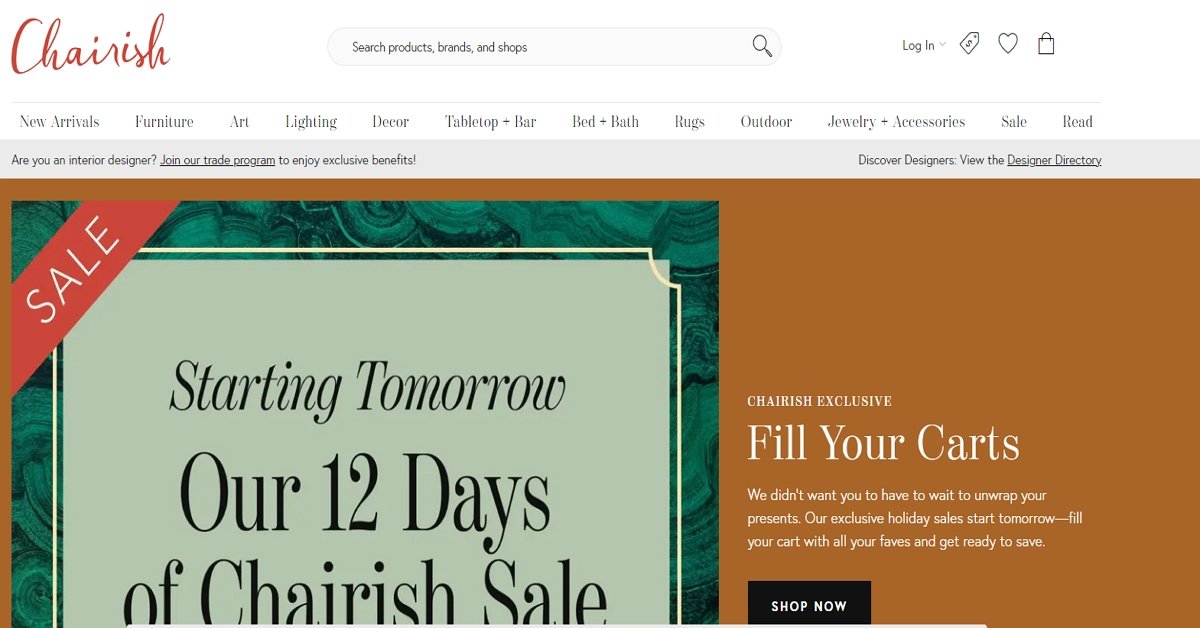
This is the citadel for selling quality, unwanted furniture, and home décor. Product listing is free, and you won’t have to break a sweat before you sell. Once the platform confirms your item is in good condition and of high quality, it will take charge of your entire marketing and shipping logistics.
In the end, you will get between 70% and 80% of the total purchase fee.
14. ThredUP
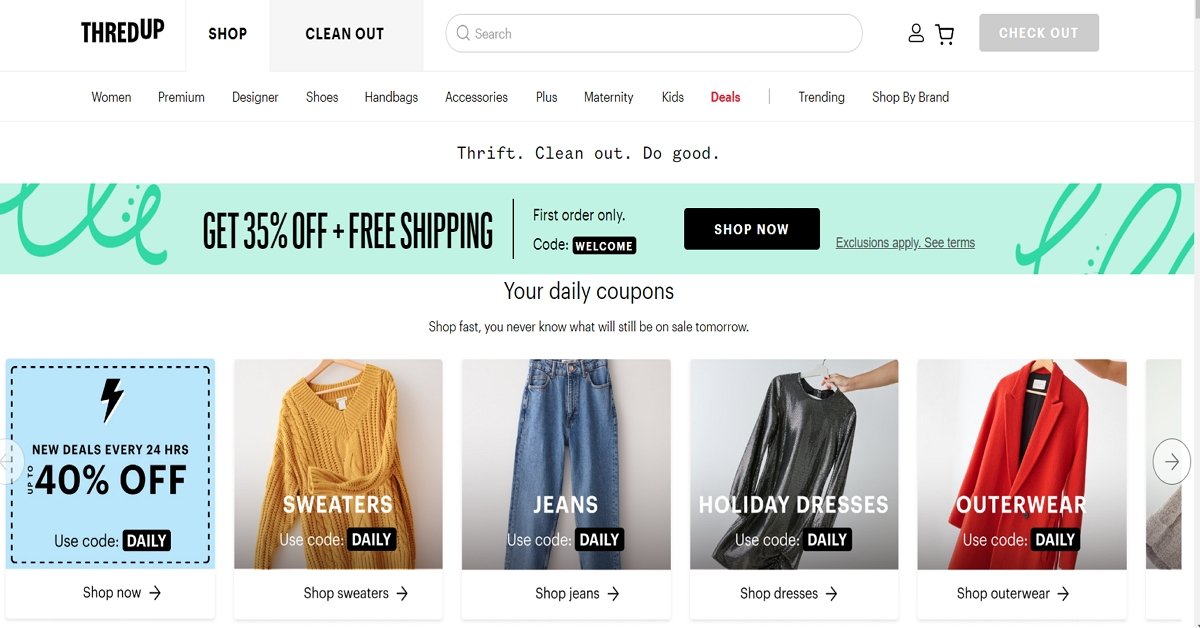
This resale fashion marketplace is one of the best online sites for people who want to make money selling their old clothes. They take care of everything for you, including listing your items, and then give you a good percentage of the sale. This store is popular with mid-range brands like GAP and J. Crew.
15. Tradesy (Vestiaire Collective)
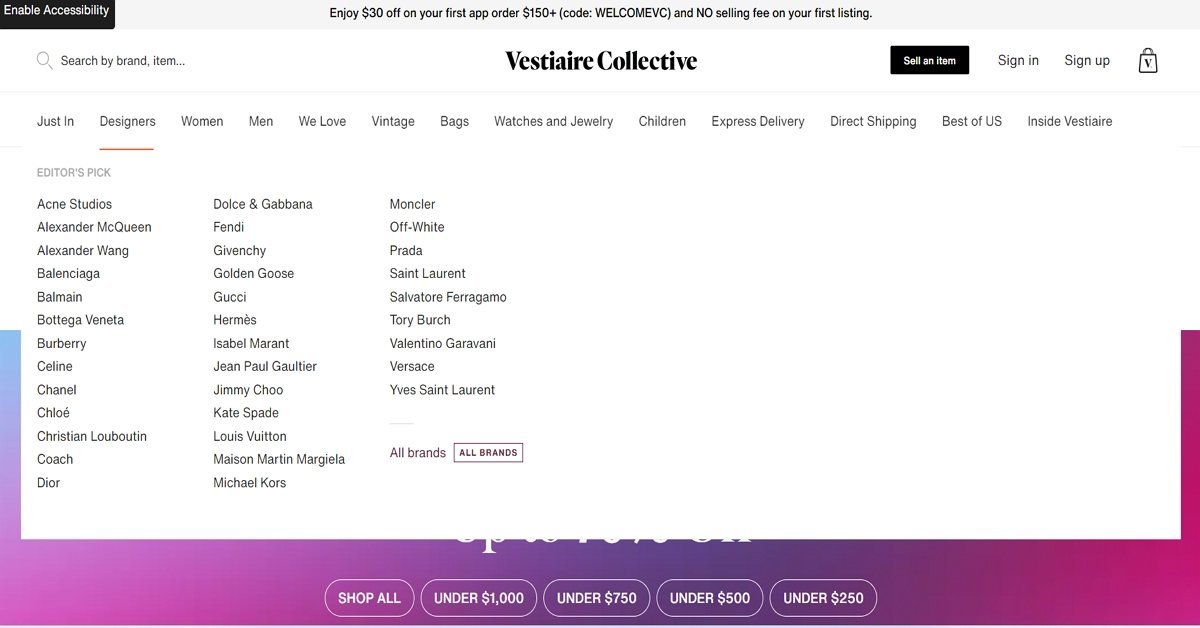
Tradesy is an online store that sells authenticated designer brands like Gucci, Balenciaga, and Rolex. Unlike other high-end resellers, Tradesy allows you to set your own prices and keep 80% of that amount.
They inspect these high-end items for authenticity and can help you with pricing and images. This is a good option for those who don’t mind managing their own items for sale, with the advantages of a luxurious customer base.
16. DePop
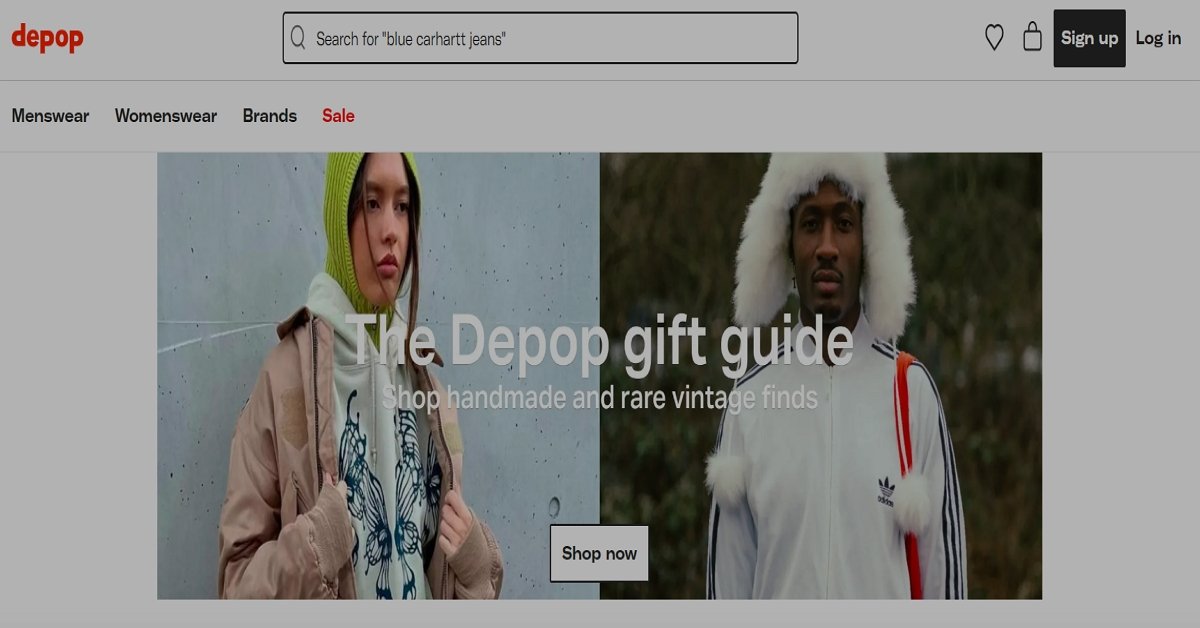
Depop is an online marketplace where people can buy and sell clothing items. Users can browse through thousands of products and find new styles they love. You can also create your own store pages and start selling your favorite clothes. Depop offers a unique online shopping experience that combines the best features of eBay and Facebook Marketplace.
Depop is easy to use and charges only 10% of the total purchase.
17. Mercari
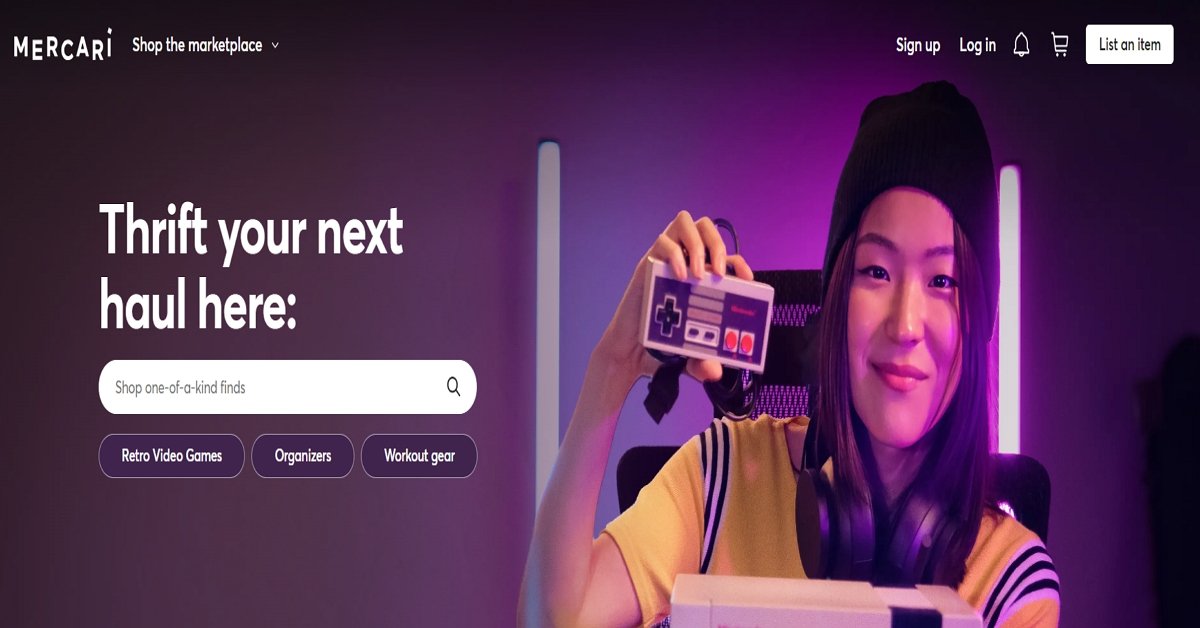
Mercari is a C2C online shopping platform where users can buy almost anything. Merchants offer a wide selection of items, including electronics, clothing, home decor, toys, books, and much more.
Mercari charges a 10% fee on the total purchase, along with a 50 cent transaction fee and an additional 2.9% for payment processing, especially with PayPal.
18. VarageSale
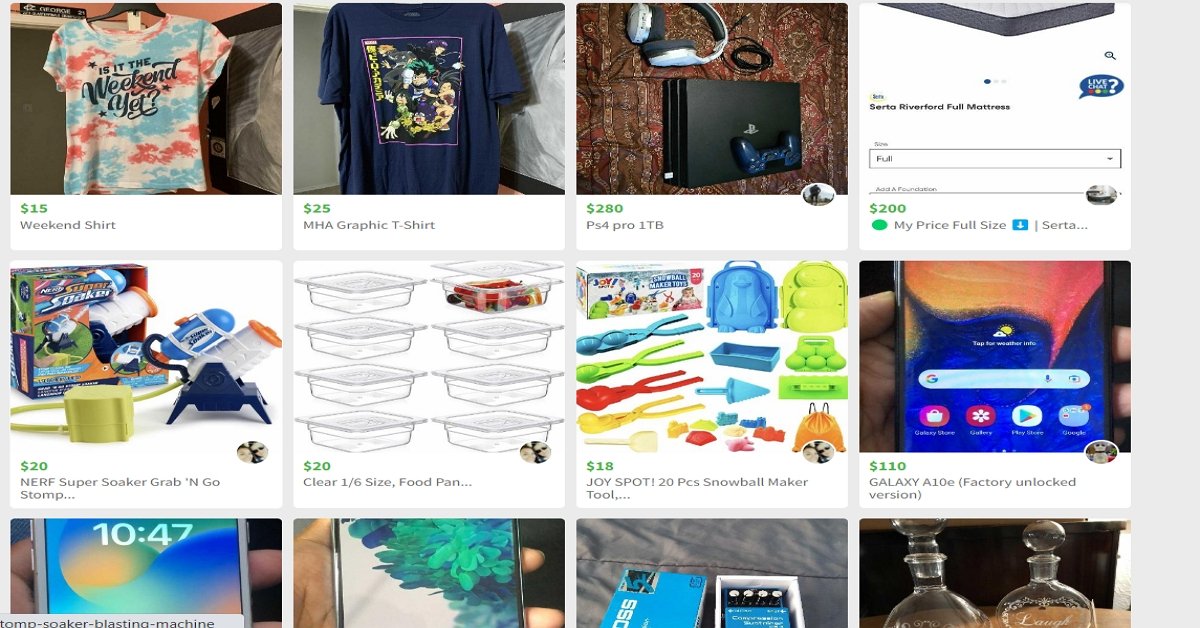
This is one of the most security-conscious marketplaces online. The platform makes manual screening of all buyers and sellers mandatory. Only people with real identities get the approval of the VarageSale team. This helps keep scammers at bay. It also solves issues of fake listings witnessed on some other platforms. You can then list your unwanted items for free, be it shoes, furniture, clothing, or others. . Unlike many other platforms, VarageSale is completely free. It does not charge any transaction fee, payment processing fee, or other platform charges. Without a doubt, VarageSale is one of a kind!
19. Vinted
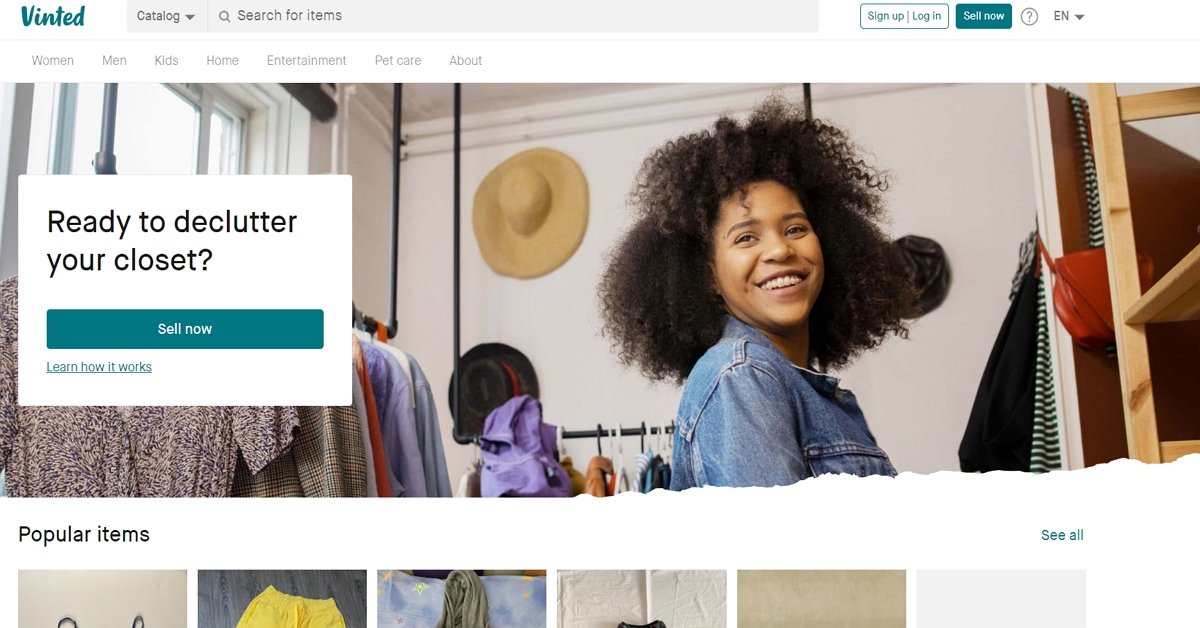
Vinted is a mobile marketplace where sellers don’t pay fees for their used clothes. That might sound too good to be true, especially when you consider you get to set your own prices. When an item sells, Vinted will send you a prepaid label for easy shipping, and you will receive payment once the buyer receives the package.
20. ASOS Marketplace

ASOS is a global online fashion retailer offering high-quality clothing and accessories for men, women, and children. They offer thousands of brands, including leading designers such as Burberry, Paul Smith, Kate Spade, and Louis Vuitton. Their mission is to provide customers with access to elite styles at affordable prices. Listing your stuff is free, but ASOS charges a 20% commission on the total purchase fee.
21. Gumtree
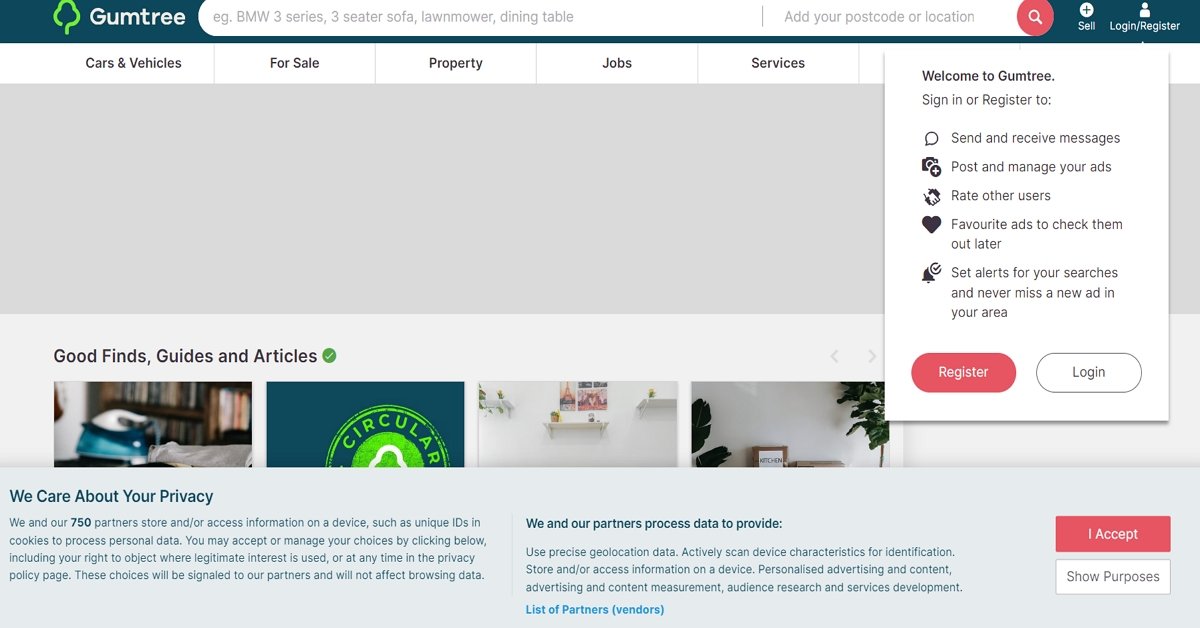
This is another platform for all kinds of trade and is also available for free! However, sales sometimes drag their feet on this platform. Gumtree shares close ties with eBay, so listing your item in one marketplace and promoting it in two great places is possible, though this requires paying a token.
22. Walmart Marketplace

Until this online store opened two decades ago, Walmart used to be just a brick-and-mortar marketplace. Now, Walmart marketplace is one of the few online selling sites where you can sell just about any item. This can be apparel, furniture, beauty products, electronics, pet products, kitchen gadgets, or other home goods. And with its massive traffic plus thoroughly vetted user profiles, it is an excellent platform for making safe and quick online sales.
Even better, this top resale website does not charge any fee for opening an account with them or listing your stuff for sale. There isn’t any monthly renewal fee for your listed items either. They only get a flat commission between 8-15% of your product’s selling price, depending on the category it falls under.
Tips To Avoid Scammers
Now that you know how to start selling online and what different platforms to maximize, you are probably excited about the prospect of making money from unwanted items. This will even come in handy in this time of increasing costs of living. However, now is the time to step on the brakes for a moment.
Thanks to technological advancement, online marketplaces are magnets for people from all walks of life, with varying motives. So, as you are hoping to make some cool cash legitimately by selling your own stuff, so also are some people hoping to rip you off through crooked means. We don’t want this for you.
So, how can you conduct your business safely and smoothly on any of these platforms?
Scrutinize buyer profiles:
It’s time to play detective. Don’t be too eager to negotiate and dive straight into business with the first person who shows an interest in your stuff. Take your time to check out your potential buyers. At the sight of anything odd, it’s best to steer clear, as he or she could be a scammer. Odd events could be profiles with no real picture, fake or dodgy representations, or other actions that should set your alarm bells ringing. Desist from doing any business with such a person.
Keep your personal information to yourself:
Be professional in your dealings with all potential clients. Don’t mix business with pleasure or give out any private information like your phone number, home address, or bank details. If you decide to deliver an item to a buyer personally, then pick a venue that’s neutral and in the open. Also, ensure you receive payment before finalizing the item’s delivery.
Keep all communications on the selling site:
The platforms we’ve discussed are not meant to fast-track sales by bridging the gap between you and your potential buyer alone; It also meant to protect you. This platform can easily stop scams from happening by denying sketchy users access. However, if you’ve already taken your discussions outside these platforms, you are defenseless, like a house without a roof in stormy weather.
FAQs
Become an Entrepreneur by Reselling your Stuff
Many people have found online selling to be a fun side hustle since it’s a great way to earn extra cash. Whether you’re decluttering, raising funds, or reselling, you can make a lot of money in C2C marketplaces.
In fact, some have found online business so profitable and exciting that they go on to start their own business. Independent boutiques, video game small businesses, and YouTubers who focus on thrifts and flipping are just a few examples.
Fees commonly range from a low flat rate of a few dollars to as high as 30%, but if you can still find a margin for profit, you might find it easier to start selling stuff online than stop!
You can also achieve amazing success from a simple hustle like selling your unwanted stuff. All you need is consistent, hard work because it brings life-changing success.









